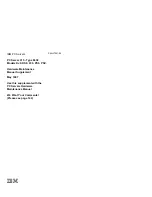File Services
264
Titan SiliconServer
When the share-level permissions differ from the file-level permissions, the more restrictive
permissions take effect (see the table below).
Note:
When configuring access to a share, it is only possible to add users or
groups known to domain controllers and that the server can see on the
network.
Note:
If user access is granted to a share, and the user is a member of a
group to which a different access level has been granted, the more
permissive level applies. For example, if a user has “Read access” to a share
but he or she belongs to a group that has Change access, the latter takes
effect.
Offline File Access Modes
The server supports Offline Files Access. This allows network clients to cache files that are
commonly used from a network/file share. To use Offline Files, the client computer must be a
computer running Windows 2000 (or a later version). There are three different share caching
modes – the server supports all three modes of caching:
1.
No Caching
: No caching of files or folders occurs.
2.
Manual
: The Manual mode allows the user to specify individual files required for offline
access. This operation guarantees a user can obtain access to the specified files whether
online or offline.
3.
Automatic
: The Automatic mode is applied to the entire share. When a user uses any
file in this share, it is made available to the user for offline access. This operation does
not guarantee a user can obtain access to the specified files, because only files that have
been used at least once are cached. The Automatic mode can be defined for documents
or programs.
Activity
Read
Change
Full
View the names of files and subdirectories
a
a
a
Change to subdirectories of the shared
directory
a
a
a
View data in files
a
a
a
Run applications
a
a
a
Add files and subdirectories
r
a
a
Change data in files
r
a
a
Delete files and subdirectories
r
a
a
Change permissions on files or
subdirectories
r
r
a
Take ownership of files or subdirectories
r
r
a


















